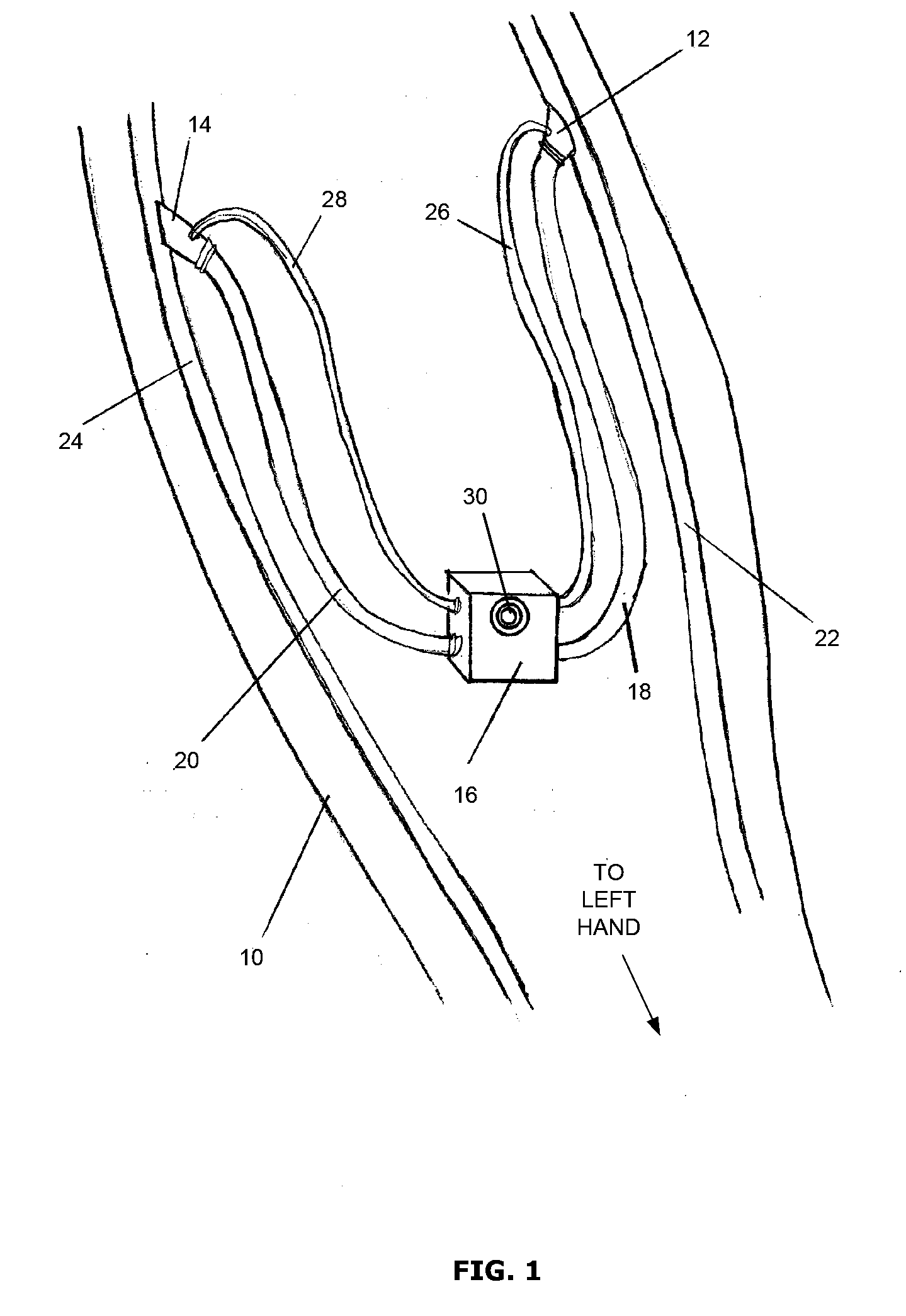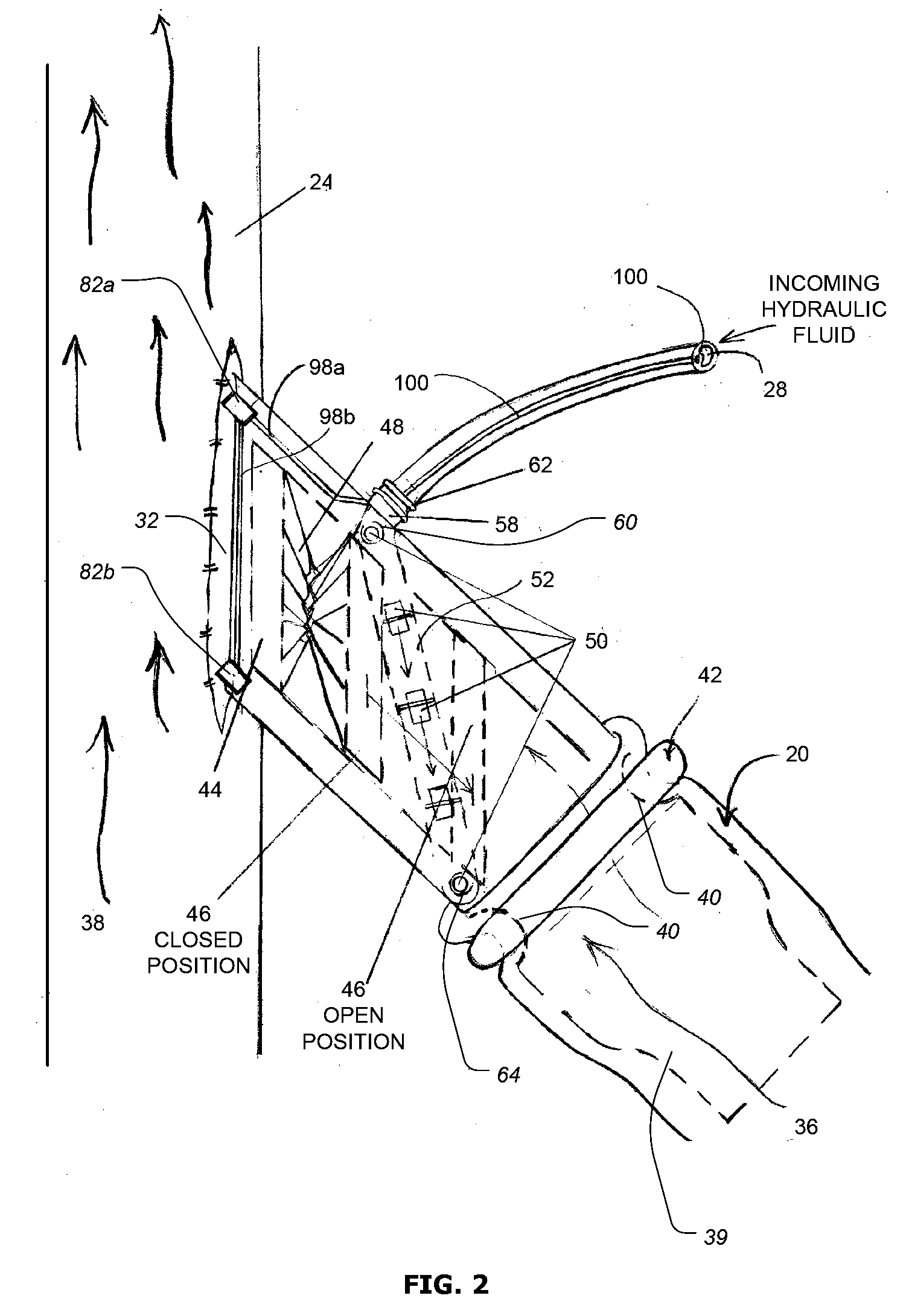Modular Arterio-Venous Shunt Device and Methods for Establishing Hemodialytic Angioaccess
- Summary
- Abstract
- Description
- Claims
- Application Information
AI Technical Summary
Benefits of technology
Problems solved by technology
Method used
Image
Examples
Embodiment Construction
[0022]The present invention provides an arteriovenous shunt device for establishing hemodialytic angioacess. Devices operating according to a preferred embodiment of the present invention are capable of collecting and storing data concerning its own patency, and transmitting the data to an external receiver for further processing and analysis by medical technicians or practitioners. While prior art devices typically require that the vascular surgeon install a single flexible shunt having a fixed length between the artery and the vein, the present invention has a modular design that includes at least two flexible shunts and one medial flow control unit. The medial flow control unit, which houses the microprocessor, a memory storage device, a transceiver and a battery, is relatively easily connected between the two flexible shunts by the vascular surgeon during the implantation procedure. Because the device comprises at least three conjoined pieces instead of one, vascular surgeons ha...
PUM
 Login to View More
Login to View More Abstract
Description
Claims
Application Information
 Login to View More
Login to View More - R&D
- Intellectual Property
- Life Sciences
- Materials
- Tech Scout
- Unparalleled Data Quality
- Higher Quality Content
- 60% Fewer Hallucinations
Browse by: Latest US Patents, China's latest patents, Technical Efficacy Thesaurus, Application Domain, Technology Topic, Popular Technical Reports.
© 2025 PatSnap. All rights reserved.Legal|Privacy policy|Modern Slavery Act Transparency Statement|Sitemap|About US| Contact US: help@patsnap.com



